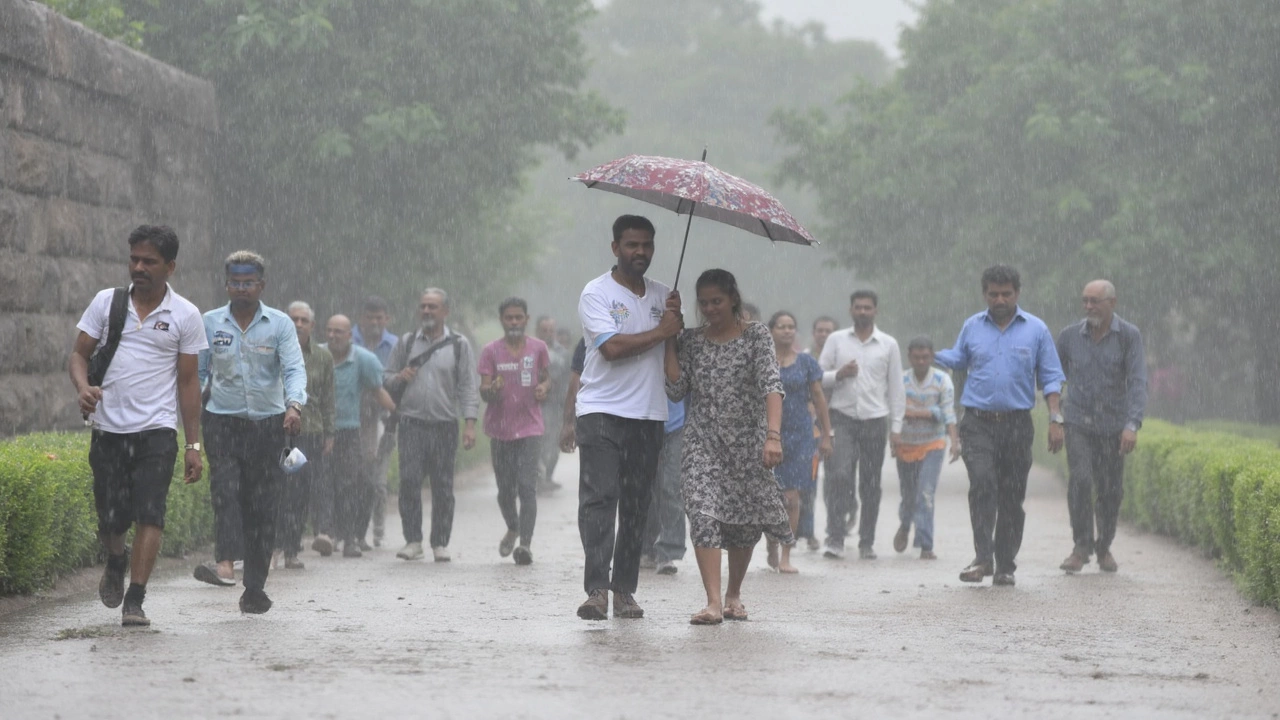IMD Advisory: Latest Rain Alerts and Weather Updates
If you live in India, you’ve probably heard the term “IMD advisory” on the news. It’s the Indian Meteorological Department’s way of warning us about heavy rain, thunderstorms, or unusual weather. These alerts can mean anything from a light drizzle to a flood‑risk situation, and they affect daily plans like commuting, outdoor events, and even weekend trips.
Recent IMD Alerts Across India
During the past weeks, IMD has issued several orange and red alerts. Delhi‑NCR saw an orange alert until July 31, with heavy showers that flooded key roads and slowed traffic. The same alert warned of thunderstorms on September 1, when temperatures dipped to a comfortable 28‑30 °C. In Uttar Pradesh, 15 districts were placed under orange alert while Lucknow stayed on yellow, after the state recorded more than 300 mm of rainfall in August—well above normal.
Kolkata faced a wet spell when a depression over the Bay of Bengal dumped water on low‑lying areas, causing waterlogging and long traffic snarls. The IMD forecast intermittent heavy rain and gusty winds into early September, so the city’s drainage crews kept pumps running and cleared drains whenever possible.
Even sports events feel the impact. The IPL 2025 opener between KKR and RCB at Eden Gardens was under an IMD orange alert, raising the chance of thundersqualls, lightning and even hail. While the rain probability was low for the evening, a sudden downpour could have disrupted play, and there was no reserve day for the match.
How to Stay Safe During an IMD Advisory
First, check the alert level. Orange means heavy rain is likely, and you should carry an umbrella, wear waterproof shoes, and leave extra time for travel. Red alerts are more serious—avoid non‑essential travel, stay away from low‑lying areas, and follow local authority instructions.
Second, keep your phone handy for real‑time updates. Most news apps push IMIMain alerts as they are issued, and the IMD website provides detailed maps. If you’re planning a road trip, look for the latest traffic reports—flooded bridges and stalled trains are common during heavy showers.
Third, protect your home. Clear gutters, move valuables to higher ground, and unplug electronic devices if you expect strong winds or lightning. In Delhi and NCR, sudden waterlogging can affect basements and ground‑floor rooms, so have sandbags ready if you’re in a flood‑prone area.
Finally, stay cool if temperatures stay high. Even when rain cools the air, humidity can make it feel uncomfortable. Drink plenty of water, avoid staying in direct sun for long periods, and use fans or air‑conditioners wisely to save energy.
Overall, an IMD advisory is a heads‑up, not a panic button. By checking the alert level, staying informed, and taking a few simple precautions, you can keep your day on track even when the monsoon decides to turn up the volume.
Keep this page bookmarked for quick reference whenever the IMD issues a new advisory. We’ll update the list with the latest rain alerts, forecast details, and safety tips to help you navigate India’s ever‑changing weather.
Delhi Weather Alert: Heavy Rains, Thunderstorms, and Travel Warnings for July 31
Delhi faces intense thunderstorms and heavy rains on July 31, 2025, with temperatures between 26.4°C and 31°C. IMD warns of waterlogging, slippery roads, and strong winds, urging residents to use rain gear and avoid flooded areas. Commuters are advised to stay indoors if possible.




